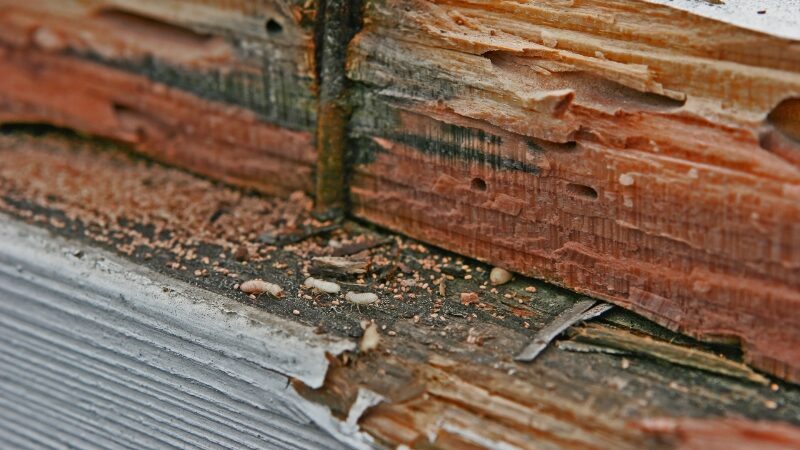The winter is almost over! As the spring draws near, the warmer air andincreased humidity create the perfect conditions for nature to come back to life. On the downside, higher temperature and moisture levels are also ideal for a termite invasion.
Because termites prefer dark and damp places, a humid crawlspace with poor ventilation or moist soil under your foundation can easily become an open invitation for a termite colony during the spring and summer. Since these destructive pests could cause costly foundation damage in a short amount of time, keeping an eye out for any termite activity as the weather warms up is one of the few things you can do to make sure your home won’t fall victim to a termite infestation.
Recognizing the Signs of a Termite Infestation
- Here are a few common signs indicating you may have a termite infestation:
- Pencil-width tunnels, also known as “mud tubes,” spreading out along your foundation, exterior walls, and other home components;
- Small piles of sawdust-like droppings in any area of your home;
- Swarmers, either dead or alive (and/or discarded wings), near your foundation, windows, doors, or any other place where they could have entered your home;
- Wooden beams, sills, floor joists, or other structural supports that sound hollow when tapped;
- Small pinholes where termites have eaten through wood or drywall;
- Loose or squeaking floorboards;
- Peeling paint.
Although a few termites might not look particularly dangerous or destructive,a termite colony could damage your home’s foundation as well as the rest of your house if left untreated. In fact, these “silent destroyers” could cause a significant amount of damage before you even realize there’s a problem. It is for this reason that you need to take measures as soon as you recognize the very first signs of a termite infestation.
Doing Your Due Diligence
In addition to identifying potential termite activity, knowing a few additional things about these pests could help you prevent the possibility of an infestation. So, here are a few important facts about termites.
Termite infestations usually coincide with water damage
- As mentioned above, termites are attracted to dark and damp places, such as crawlspaces and foundations. This means thatstanding water in your crawlspaceor soggy soil around your foundation increases your home’s chance of being attacked by termites. Because excess water under or around your home can also lead to all sorts of issues, including softwood and peeling paint, the damage caused by termites can sometimes be confused with water damage.
Older homes with wooden foundations or concrete cracks are more prone to termite infestations
- In the case of a termite infestation, a pier and beam foundation that contains wooden elements will suffer more damage than a concrete foundation. However, concrete foundations can also be damaged by termites. Even though termites don’t eat concrete, they can squeeze through tinyconcrete cracksto gain access to the wooden substructure of the home. Once inside the foundation, termites can build thousands of mud tubes, which could exert a lot of pressure and cause cracks to expand. Depending on how serious the termite infestation is, the home may sustain severe structural damage and even become unfit to live in.
Termites don’t usually go away on their own
- The assumption that termites die off or migrate during the cold season is incorrect. Once they get inside a home, termites may never leave without professional treatment and control methods.
An annual termite inspection is one of the most effective ways to keep termites away
- Even though termites are notorious for causing extensive damage to buildings, there is no permanent treatment against them. In general, having an annualtermite inspectionperformed by a licensed professional is the only way to reduce the risk of a termite infestation. If you already have a termite problem, termite control pros can apply different treatments, which range from pesticides to termiticide barriers that can be used to protect foundations and crawlspaces.
Homeowner’s insurance doesn’t usually cover termite damage
- While there are specific circumstances when homeowners can filea valid claimand get compensation for damage caused by termites (or other pests), most standard policies won’t cover this type of damage because it’s considered preventable. Homeowner’s insurance is only meant to cover damage caused by unexpected events.
If you suspect a termite infestation in your home, there’s no reason to panic. However, it’s important to get in touch with a local pest control company as soon as possible, even if there aren’t any signs of termite activity. Only a professional, who has plenty of experience protecting Houston homes from termites and uses the latest control methods, can help you get rid of these pests for good. On the other hand, if your home’s foundation or crawlspace seems to have been affected by termites or any other problem, fill outour online form for a free foundation assessment and estimate before further structural damage occurs!



